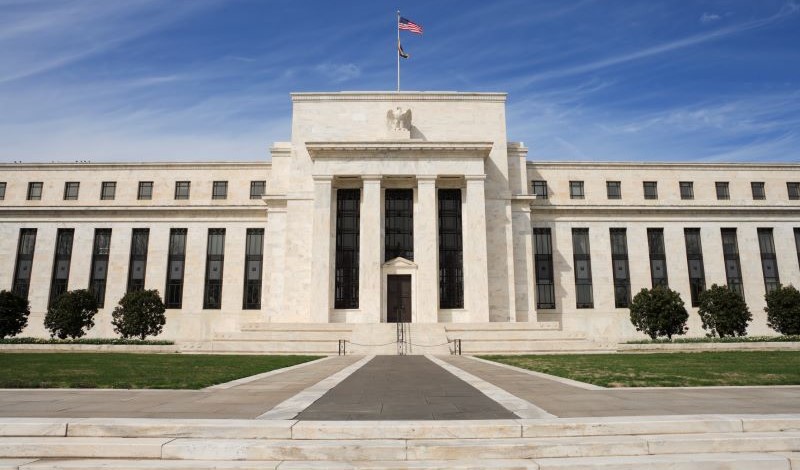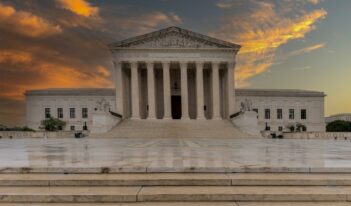
Scholars advocate the greater exercise of the Fed’s unique removal power.
The Federal Reserve’s powers to set interest rates and shape monetary policy attract plentiful media coverage. But the Federal Reserve continues to keep one of its most potent tools hidden in its arsenal: the power to fire the executives who run banks.
In a recent article, two scholars argue that the Federal Reserve’s unique removal power serves as the foundation for modern banking oversight. These scholars—law professors Da Lin of the University of Richmond and Lev Menand of Columbia Law School—favor the more frequent use of the Federal Reserve’s removal power to combat unsafe or unsound financial practices.
Since its creation in the Great Depression, the Federal Reserve’s removal power has both expanded and contracted in its scope, according to Lin and Menand. In the eyes of New Deal reformists, the power to remove banking officials would enhance supervisory control over rogue banking practices and better align the interests of senior bankers and the public.
Decades later, in 1989, Congress passed the Financial Institutions Reform Recovery and Enforcement Act to ensure that the Federal Reserve’s removal power could exist “at its broadest scope,” according to Lin and Menand. This legislation empowers the Federal Reserve to remove officials, directors, or employees from their positions for “unsafe or unsound” conduct with the possibility of lifetime bans from the banking industry.
Lin and Menand emphasize that the removal power functions as an “indispensable component” of effective banking regulation. They acknowledge two other means of regulating banks—corporate governance measures and prudential regulatory rules—but they view these other mechanisms as insufficient if they are not combined with the effective use of the removal power. Traditional corporate governance measures that focus on shareholder interests only increase incentives for banks to engage in socially harmful practices, according to Lin and Menand.
Shareholders’ interests by nature can lead banks into making more risky investment decisions to boost profits, argue Lin and Menand. They point to research showing how shareholder-friendly banks performed worse than other banks during the 2007-2008 financial crisis. Lin and Menand suggest that, even if investors were not directly pressuring management to take on higher risk, “they were complicit in setting manager’s incentives to achieve this result.”
Agencies struggle to design and develop well-calibrated rules fast enough to mediate new types of risks that may arise in the financial sector, Lin and Menand note. They conclude that the removal power, by reorienting the banking managers’ incentives away from shareholders and toward the public, exists precisely to bridge this regulatory gap.
Significantly, Lin and Menand find that the Federal Reserve has largely failed to use its removal power against senior management and instead has targeted lower-level employees, such as tellers and branch managers. Rather than remind senior bankers of their status as fiduciaries to the public, removal actions against lower-level employees only serve to promote “professional regulation” that seeks to ensure these workers will comply with basic standards of behavior, according to Lin and Menand.
The data Lin and Menand collect show that after the 2007-2008 financial crisis, the Federal Reserve failed to remove a single senior major executive of a U.S. bank. Furthermore, they find that the percentage of removal orders against senior bank management declined by half from the 1990s to the 2000s. Lin and Menand argue that these data points should concern regulators because the removal power only works if senior bankers actually believe they will be removed for unsound practices.
Lin and Menand suggest that the Federal Reserve prefers to take action against low-level employees because the agency is “legally constrained, resource constrained, and poorly motivated.” The removal power requires the Federal Reserve to establish proof of culpability, under a “personal dishonesty” standard, making it difficult to attribute fault to senior bank managers who can plausibly deny knowledge of operational details.
Lin and Menand suggest that many Federal Reserve personnel view all-out removal as a draconian tool of last-resort, reserved for situations of clear and obvious bad-faith acting.
To reinvigorate the removal power, Lin and Menand recommend that the Federal Reserve allow for greater variation in removal orders. They advocate a middle-ground of punishment that would not resort to all-or-nothing lifetime bans from the banking system, but rather one- or two-year suspensions proportionate to the offense. Lin and Menand argue that this change would more effectively deter misconduct since federal bank supervisors would be more likely to use the power if they see it as more proportionate and fairer.
In addition, Lin and Menand propose that Congress should recognize supervisory failure as a separate removal ground. They argue that modern banks’ decentralized organizational structures allow senior officials to deny culpability more easily. They suggest that allowing banking managers to be removed on grounds of supervisory failure would pierce the veiled protection these senior officials currently enjoy due to the removal power’s culpability requirements.
Lin and Menand anticipate objections to this proposal based on existing corporate law which broadly insulates senior officials and directors from failures of supervision. In response, they argue that banks, unlike traditional corporations, provide critical money and payments infrastructure for the national economy and that shareholder returns are secondary goals to major banks.
Lin and Menand conclude that the Federal Reserve’s existing removal power remains a powerful tool for strengthening banking governance—but only if the agency chooses to use it.



